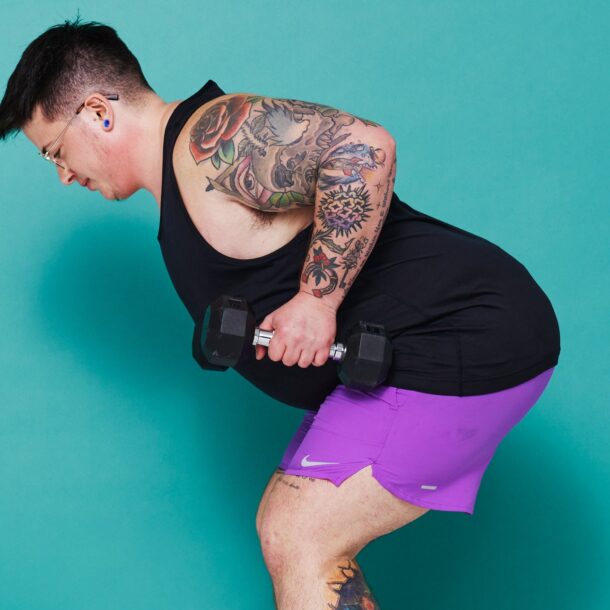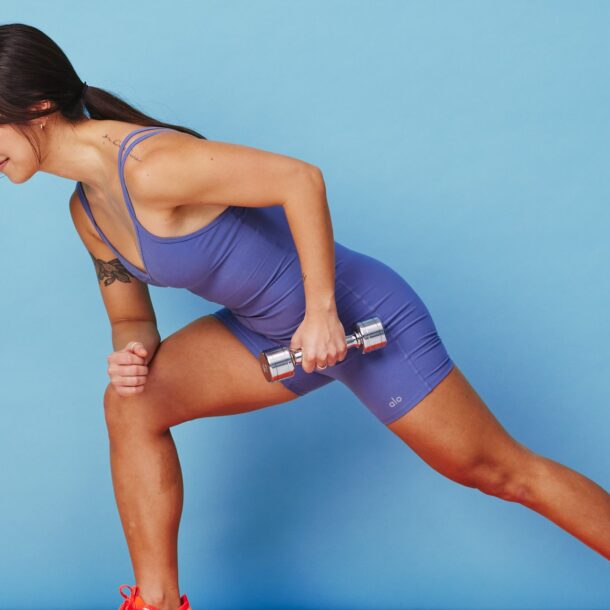
A Quick Dumbbell Workout That Builds Serious Strength in Your Legs and Butt
Pumping out endless squats is not the only—or best—way to challenge your lower body. That’s why a solid dumbbell leg workout will include exercises that hit all the major compound movement patterns.
“The main thing is, you want a hip hinge, a squatting pattern, a hip bridge pattern, and hip abduction,” ACE-certified personal trainer Sivan Fagan, founder of Strong With Sivan, tells SELF.
Though this might sound complicated, you’re probably actually pretty familiar already with examples of these motions. A hip hinge is a vertical movement where you bend your knees slightly, flex at your hips, and send your butt backward (like in a dumbbell Romanian deadlift or a barbell good morning). A squatting pattern involves flexing at the hips and the knees as you lower your butt downward, as if you were sitting in a chair (like in a goblet squat or a lunge). With a hip bridge, you extend your hips from a horizontal position (like a hip thrust or glute bridge), while with hip abduction, you move your leg laterally away from the middle of your body (like with a side lunge or side-lying leg raise).
By incorporating these functional movement patterns into your leg workout, you’ll end up challenging muscles in the front of your lower body, like your quads, and in the back of your body, like your glutes and hamstrings. You’ll also target the small muscles that make up your side butt—an important area for guarding against injury that’s often overlooked in strength training. Put all of this together, and you’ll get a comprehensive lower-body routine that will help you build balanced strength.
In the leg workout Fagan created for SELF below, getting stronger in all those areas is going to be the name of the game. And in doing so, you may not need to get as sweaty as you might think—slowing down and really honing in on the movements is going to be more important than speed here. Remember, a strength workout doesn’t need to become a cardio session!
“If you’re focusing on speed or doing as many reps as possible in a certain amount of time and only taking a little bit of time to rest between sets, you’re not going to be able to lift as much weight, which is key to building strength,” Fagan says. “A workout that focuses on getting you as sweaty as possible or as fatigued as possible is not equal to an effective workout.”
That’s why in this dumbbell leg workout, you’re going to take the time for ample rest—one to two minutes—between either straight sets (where you take a breather after your reps) or supersets (when you do two exercises back to back). This will give your muscles the recovery they need to be able to complete the same number of reps during your next set. Over time, you’ll likely notice you’re able to lift more weight or do more reps with the same weight. That’s progressive overload, and it’s vital to getting stronger.
Related Articles
2023 Healmyselfnow @ All Rights Reserved


